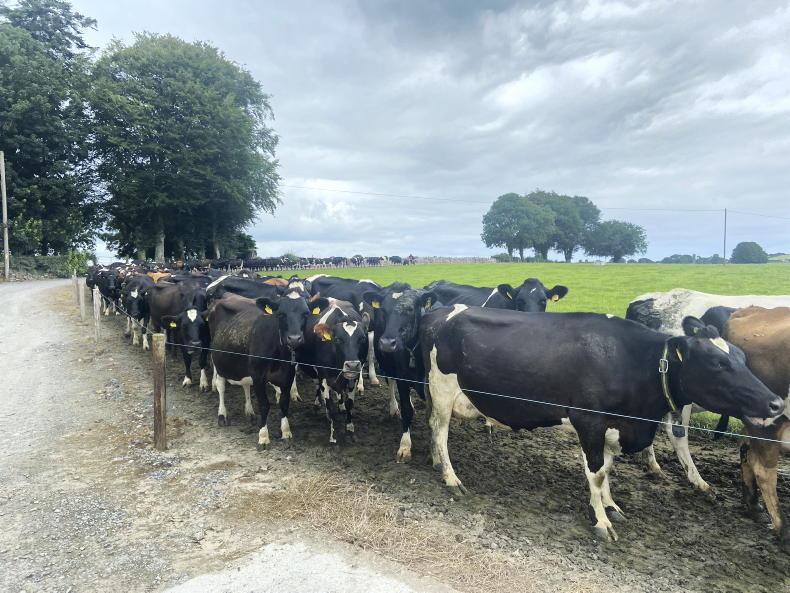A collapse in milk proteins and a sharp fall-off in yields have left dairy farmers facing a double hit to their July milk cheques.
Farmers report that milk proteins have fallen from around 3.5% to 3.7% to as low as 3.25% to 3.35% during the month of July, as a combination of last month’s heatwave and poor grass growth increased stress levels in cows.
The reduction in protein levels equates to a drop of 0.5c/l to 0.7c/l in milk price, one industry source estimated.
The total income loss for an 80-cow herd in July could range from €280 to €320 or around €5.5m across the full spring-calving national herd.
George Ramsbottom, Teagasc dairy specialist, said the fall in protein levels was extremely unusual for this time of the year.
The drop in proteins was not as noticeable during the drought of 2018
He pointed out that protein levels were normally at their lowest in April at around 3.4%, and then increased steadily to a high of close to 4% by the end of September.
“I have never seen a fall of this magnitude before. I think it was the heat. The drop in proteins was not as noticeable during the drought of 2018. But, while it was very dry that year, it wasn’t as hot,” Ramsbottom said.
“It was extremely hot during the last two weeks of July, and that really took a toll on milk proteins,” he added.
Milk output
The fall-off in milk proteins has been exacerbated by a sharp fall-off in milk output. Ramsbottom estimated that yields had fallen by around 2l/cow over the last few weeks.
He said poor grass growth and challenging pasture management were also a factor in the difficulties being experienced by milk suppliers.

The herd produced milk with an average protein content of 3.94% in 2020.
PastureBase data shows that grass growth is currently running at 30% to 50% below normal for this time of the year, and has been slow to recover despite the recent rains.
“This has been an extremely difficult year for grassland management,” Ramsbottom pointed out.
A collapse in milk proteins and a sharp fall-off in yields have left dairy farmers facing a double hit to their July milk cheques.
Farmers report that milk proteins have fallen from around 3.5% to 3.7% to as low as 3.25% to 3.35% during the month of July, as a combination of last month’s heatwave and poor grass growth increased stress levels in cows.
The reduction in protein levels equates to a drop of 0.5c/l to 0.7c/l in milk price, one industry source estimated.
The total income loss for an 80-cow herd in July could range from €280 to €320 or around €5.5m across the full spring-calving national herd.
George Ramsbottom, Teagasc dairy specialist, said the fall in protein levels was extremely unusual for this time of the year.
The drop in proteins was not as noticeable during the drought of 2018
He pointed out that protein levels were normally at their lowest in April at around 3.4%, and then increased steadily to a high of close to 4% by the end of September.
“I have never seen a fall of this magnitude before. I think it was the heat. The drop in proteins was not as noticeable during the drought of 2018. But, while it was very dry that year, it wasn’t as hot,” Ramsbottom said.
“It was extremely hot during the last two weeks of July, and that really took a toll on milk proteins,” he added.
Milk output
The fall-off in milk proteins has been exacerbated by a sharp fall-off in milk output. Ramsbottom estimated that yields had fallen by around 2l/cow over the last few weeks.
He said poor grass growth and challenging pasture management were also a factor in the difficulties being experienced by milk suppliers.

The herd produced milk with an average protein content of 3.94% in 2020.
PastureBase data shows that grass growth is currently running at 30% to 50% below normal for this time of the year, and has been slow to recover despite the recent rains.
“This has been an extremely difficult year for grassland management,” Ramsbottom pointed out.







 This is a subscriber-only article
This is a subscriber-only article










SHARING OPTIONS: